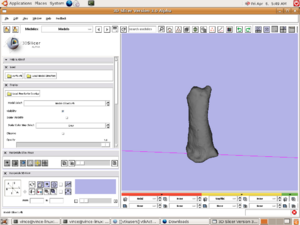EM Segmentation For Orthopaedic Applications
From NAMIC Wiki
Home < EM Segmentation For Orthopaedic Applications
Objective:
- To utilize the Slicer3 Expectation Maximization Algorithm for segmentation of the phalanx bones of the hand.
Progress:
- We have utilized the Slicer2.7 EM Segmentation Module for segmentation of the phalanx bones
- Registration was performed outside of SLicer using ITK registration algorithms that are available in the IaFeMesh software. This includes Thin plate spline, B-Spline and rigid registration algorithms.
- Probability map information was created from a single subject used as the atlas image and filtered using a Gaussian filter.
- Initial evaluation has been carried out on five subjects that also had been segmented using manual segmentation
- Work is underway to develop a Slicer2.7 tutorial for this segmentation
To Do:
- Evaluate the Slicer3 EM Segmentation Module
- Update the the tutorial to support the Slicer3 Workflow
- Determine if registration tools in Slicer are adequate for this work.
Key Investigators:
- Iowa: Austin Ramme, Nicole Grosland, and Vincent Magnotta
Links:
Figures:


